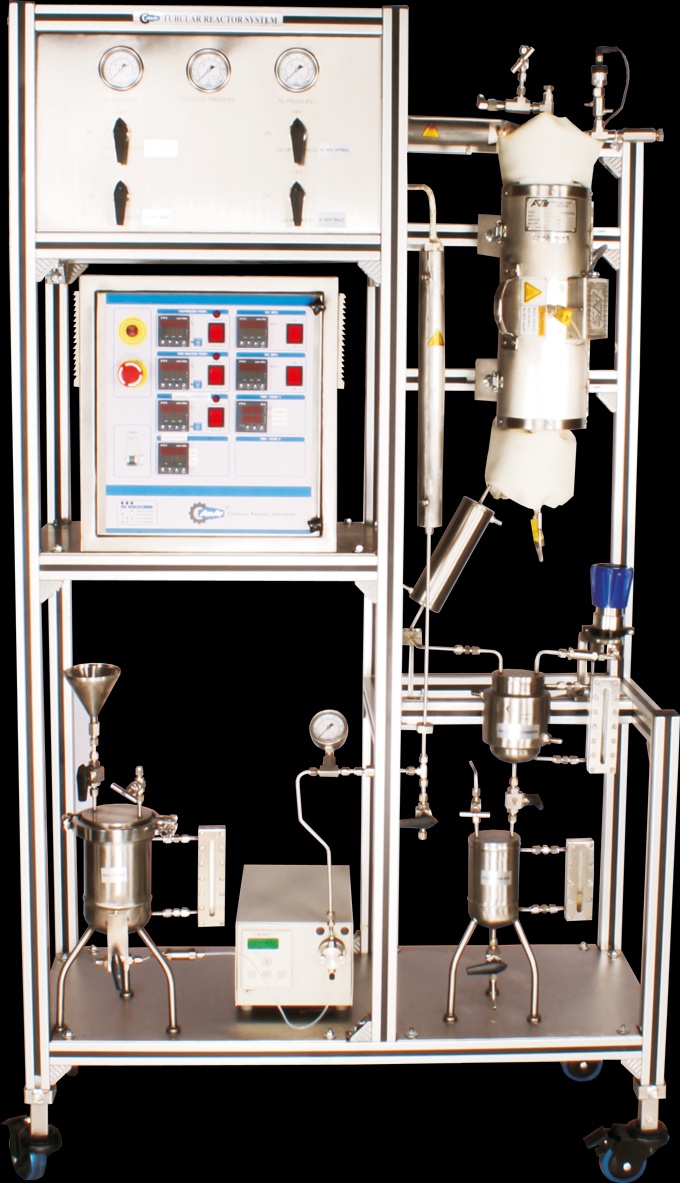The liquid runs down through a packing material in a trickle-bed reactor, which is a continuous, packed-bed reactor.
Syngas can migrate in one of two directions: downward (co-current) or upward (counter current).
Chemical and related sectors such as petroleum, petrochemicals, oil and gas, mineral and coal industries, pharmaceuticals, fine and speciality chemicals, biochemicals, and waste treatment all use trickle bed reactors.
For big volume processes, trickle bed reactors are preferred. Trickle bed reactors are employed in a wide variety of applications, and their scales and critical operational properties cover a wide range.
These reactors are also utilised in the hydro-processing of the waxy hydrocarbon product mixture produced by Fischer–Tropsch synthesis, which is an important step in the production of gas–liquid complexes. Trickle-bed reactors include a comprehensive description, modelling, design, and operation that may be obtained elsewhere.
Design of the Equipment
An example of a conventional trickling bed reactor is a tubular tank with a sieve plate or wire mesh near the bottom to hold the packed bed, and inlets and outlets for the liquid stream at the top and bottom, respectively. When it comes to gas inlets and outlets, the process dictates where they should be placed.
To achieve equal liquid distribution throughout the bed, a sieve plate distributor, bubble cap, or fine layer of non-reacting particles is placed on top of the bed.
The type of packed bed utilised in a trickling bed reactor has a significant impact on its overall performance. The bed's configuration, whether random or structured, as well as the form of the packing employed, has an impact on parameters like pressure drop and catalyst coating area.
Alternatives to the basic trickle bed reactor design may be required depending on the application to achieve varied reactor characteristics. Consider the following scenario:
- A channelled slab of metallic or ceramic material coated in a catalyst layer is used in monolith trickle bed reactors. This design results in a much-reduced loss of pressure and removes diffusion as a response limiting issue.
- Micro-trickle bed reactors employ extremely short characteristic length scales to improve reaction parameter control and process safety.
Advantages
- Because solids aren't suspended in slurry, they need less overall energy.
- It's suitable for three-phase processes.
- Catalyst attrition is reduced.
- Under high temperatures and pressures, it's simple to operate.
Disadvantages
- It's possible that channelling will occur, resulting in inefficiencies.
- Solvent evaporation might result in hot patches.
- When liquid is not evenly dispersed, performance suffers.
- Controlling vessel parameters is difficult.
- Due to the system's reliance on fluid dynamics, scaling up is difficult.
To know more about Trickle Bed Reactor, please visit - Packed Bed Reactor
Also, for any kind of requirements feel free to contact us on sales@amarequip.com


No comments yet